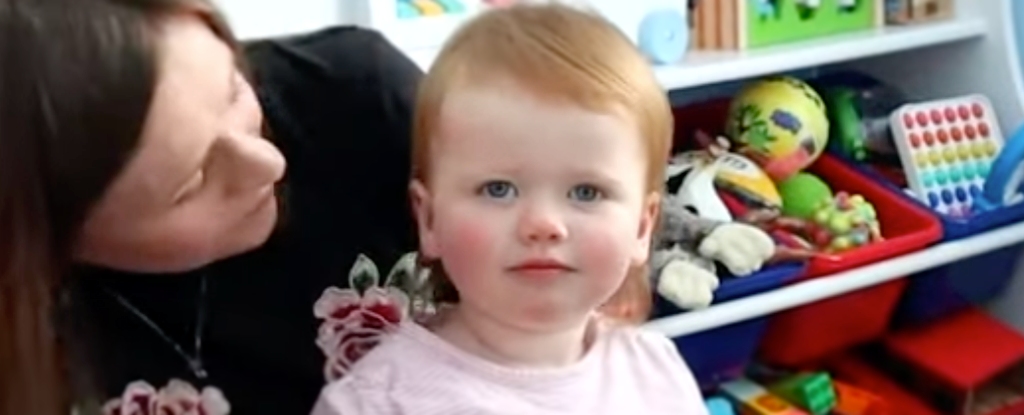An 18-month-old British girl who was born completely deaf is the youngest person to have her hearing restored after undergoing an innovative gene therapy.
The results are quite encouraging, considering that little patient Opal Sandy was born completely deaf because of a rare genetic disease, auditory neuropathy.
The condition can be caused by a defect in the OTOF gene, which is responsible for producing a protein called otoferlin, which allows the cells in the ear to communicate with the auditory nerve.
The case is part of CHORD, a larger Phase 1 clinical study. Since last year, researchers at Cambridge University Hospitals have been evaluating the effects of this gene therapy on a small group of boys and girls.
"The preliminary results are spectacular and better than I expected," said Manohar Bance, a surgeon at the British hospital and one of the researchers involved in the study, in a statement.
"We hope this is the start of a new era for gene therapies for the inner ear and for many types of hearing loss," adds Bance.

According to Science Alert, several medical teams around the world, including in China and the United States, have been testing similar treatments with good results for hereditary deafness, which originates from a rare genetic mutation.
To reduce the risks associated with the treatment being tested, the gene therapy has so far been applied to a single ear of the girl, through an injection into the cochlea.

This structure is located in the region known as the inner ear and is shaped like a snail shell. The compound contains a harmless virus (AAV1), created to correct the gene associated with this genetic disease.
After four weeks of application, the girl began to respond when she detected sound stimuli, even when the cochlear implant in her left ear was switched off. Within 24 weeks, she had developed a level of hearing close to "normal", which includes hearing whispers in her ear.
Opal is currently completing the first 18 months of treatment. According to his doctors and guardians, he recognizes his parents' voices and is beginning to communicate, using expressions such as "dada" and "xau".
"When Opal heard us clapping for the first time, it was surprising," says the child's mother, Jo Sandy. "The expression 'almost normal' hearing was used, and everyone was so excited about the amazing results that had been achieved," she points out.
Although the response to gene therapy has been good, the girl will still be monitored for at least five years. During this period, the idea is to assess how listening is improved and identify possible problems.
Rare genetic disease
To understand the case of the girl who heard for the first time, it's worth explaining that auditory neuropathy can be caused by a single variation in the gene known as OTOF. It is this gene that produces the protein otoferlin, which is essential for the inner hair cells in the ear to communicate with the auditory nerve, resulting in hearing.
As the condition is quite rare, diagnosis is usually delayed. In most cases, family members don't discover the deafness until around the age of 2-3, when the condition causes speech delay.
For scientist Bance, this study represents a future alternative for correcting the OTOF gene and allowing children to hear. "It also supports the development of other genetic therapies that could make a difference in other genetic hearing conditions, many of which are more common than auditory neuropathy," he says.
Now, the team will try to understand, in the next phases of the clinical study, whether providing patients with larger amounts of gene therapy will improve and accelerate the results associated with the ability to listen.






